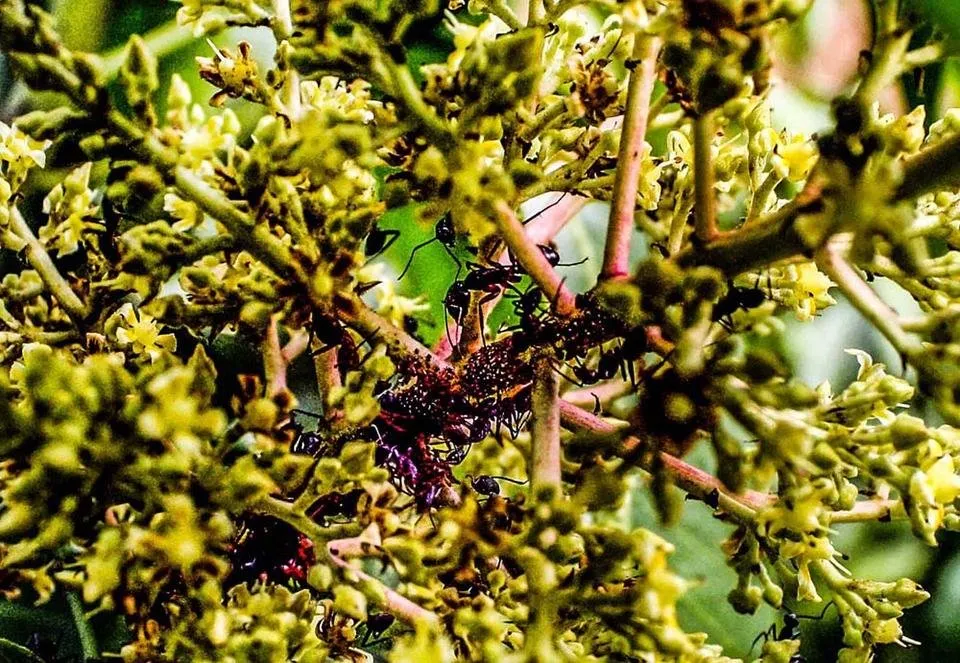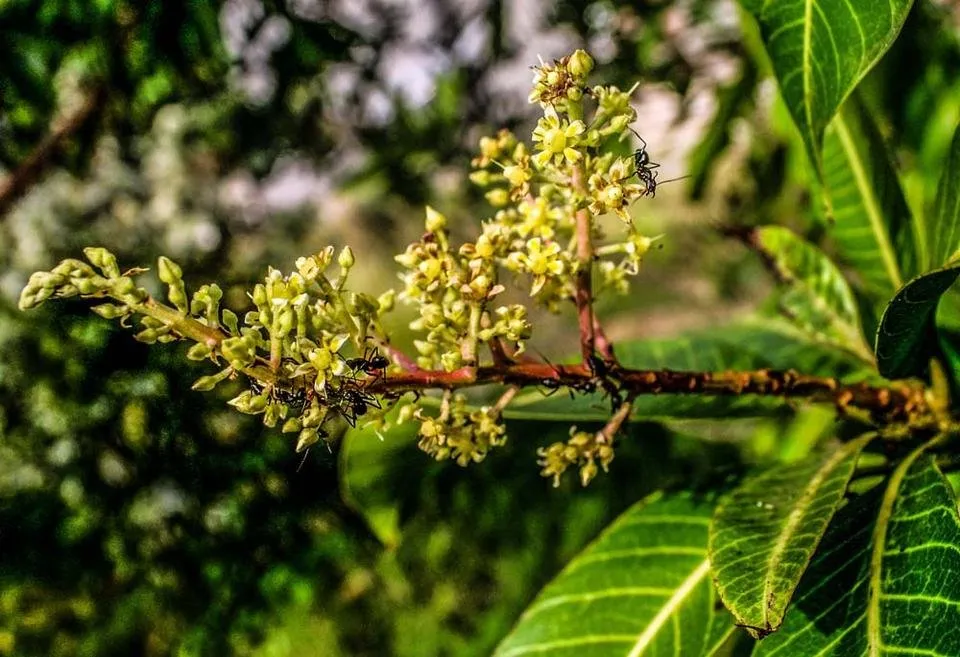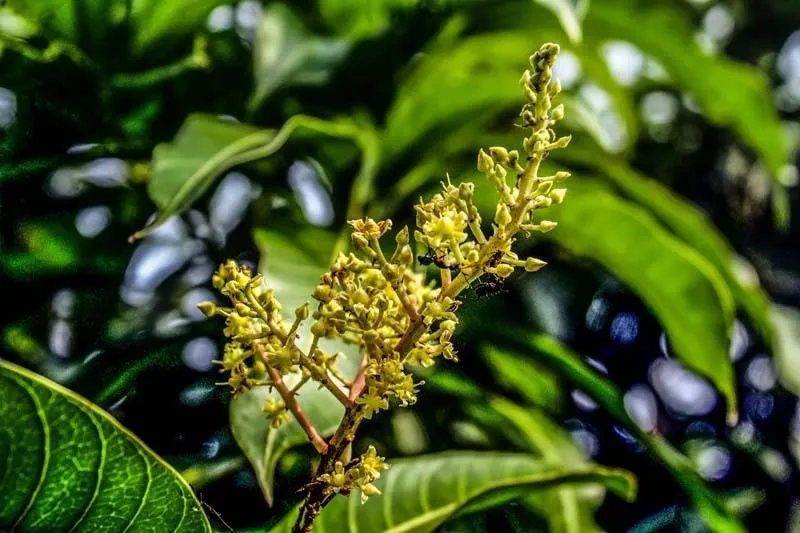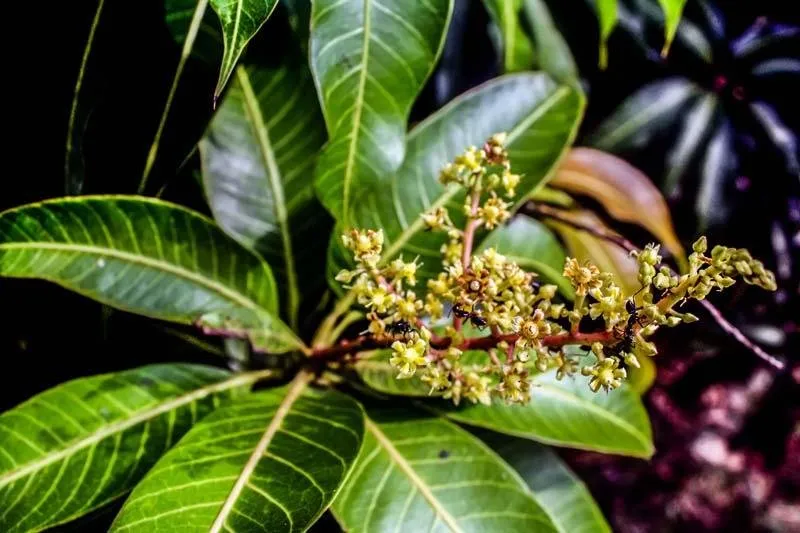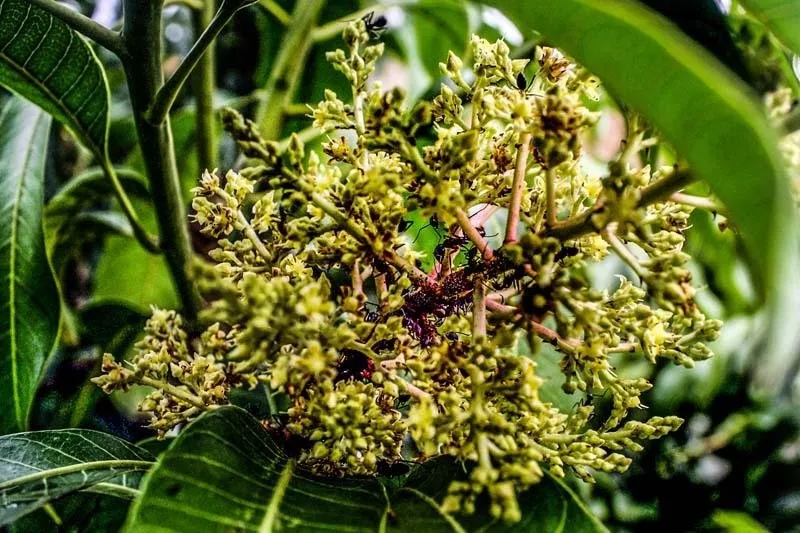In Indonesia there is a proverb "There is sugar, there are ants". That means, "Where there is a lot of fun, there are many people who come". Or "People will be interested to come to a promising place".[Source]
Perhaps this proverb is also in line with the current steemit development, with more and more people using this platform, including in my region, Aceh, Indonesia.
However, through this post, I am not talking about steemit. Through this social media, this time I just wanted to share a glimpse of information and some photos to the steemians about gangs or troops of ants who control the mango flower.
The mango tree in my home yard in Lhokseumawe, Aceh, flowered again. Previously, all the mango flowers fall, which I suspect, it happens due to pest attacks so that fertilization does not occur. This time, the flowers that grow on my mango tree are fewer than before. However, the mango flower has now been mastered (colonized) by a large black ant gang.
So, it is not the fire ants (tetraponera rufonigra), or ants (oecoephylla), usually seen on mango trunks and often pacing and making ants' headquarters on the branches of mango trees. But, this is a big black ant.
I am trying to find references by surfing the internet, why do ants get together and master the mango flower? Is the presence of large black ants on mango flowers as a pest or drug (useful for the development of mango flower?) Unfortunately, I do not find an answer that can satisfy my heart.
I only get a glimpse of the information that the pest type of fruit fly is afraid of two types of ants, ie ant rangrang and black ants. So the presence of ant rangrang and black ants on mango trees became predators of fruit fly. However, there is no explanation, what is the "gain" or "loss" if many large black ants are on the mango flower?
Other information mentions, a white lice pest that attacks mango plants, he symbiotic mutualism with black ants, who organize and "breed" the eggs. White mite sucks on a mango plant, and its sugar-containing secretions are eaten by black ants. The rest of the secretions of white lice containing sugar and attached to the leaves, stalks and mangoes fruit are invaded by sooty mushrooms. Bad effects that occur after that is the color of leaves and mango fruit to black.[Source]
Had my mango tree have been fruitful, of course the existence of the ants would be useful. Because the squirrel dare not come to the mango tree to eat the mango fruit for fear of ants. The problem is, my mango tree has not yet been fruitful, it's still in flowering, but it's already ridden by a mass of big black ants.
| Camera | Canon EOS 1000D |
|---|---|
| Lens | EF-S18-55mm f/3.5-5.6 IS |
| Photograph | @fernandes |
Reference:
www.kamusperibahasa.com
abi-maryam.blogspot.co.id
asikaja.com
